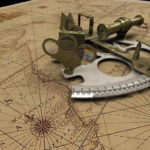Let’s start with the most common and well -known material for everyone for chipboard furniture. Otherwise – this is a wood -cutting plate. It is this material that is most often used in the manufacture of furniture, as well as in the design of the interior (for example, in the production of partitions) and in construction in general. DSPs of chips and sawdust of wood, which are treated with fastening substances – formaldehyde resins. It is the content of these resins that is the main disadvantage of furniture from chipboard. Over time, a certain amount of formaldehyde (to put it mildly, not quite useful substance, if not harmful) begins to stand out in the environment. But if you still buy furniture from chipboard, then ask the seller from which type of chipboard this furniture is made. Type of chipboard – E1 is preferable to E2, since the content of formaldehyde resins here is significantly lower than. It will not be superfluous to ask the country-manufacturer of chipboard. The highest quality chipboard is produced in Austria and Germany. Of the advantages of chipboard, its good strength, wear resistance, as well as the ability to process and low pricing policy can be noted. Economy-class furniture, office furniture for the most part is made from this material. If you have a cabinet from chipboard in your kitchen or bathroom, then do not worry, as a rule, for such moist places, chipboard of increased moisture resistance is used. In addition, for kitchens (for example, in countertops), a laminated plate is used – lined with a special film, which creates a variety of color scheme and a variety of textures, and also provides immunity to high temperatures, resistance to damage.
Pure furniture material in ecological terms – MDF. He, like chipboard, is made of wood chips, fibers and sawdust, only completely harmless lignin and paraffin act as fastening substances. Among its advantages are strength and durability, and the disadvantages include the price. But it’s worth it!
If facades are made from chipboard or MDF, then the rear walls of the furniture are usually made from fiberboard. DVP deciphens as a wood -fiber slab. All of the same wood sawdust is made only by wet pressing. DVP, of course, is quite durable material and it is widely used “in its area” (for “asses” and bottoms of cabinets, boxes). Plywood can act as an alternative to fiberboard in the expensive furniture, but, in principle, in terms of its technical parameters, the fiberboard is practically not inferior to it.
Here are mostly all about the most common materials for cabinet furniture. Knowing all the pros and cons of each of them, you can easily make the right choice, since usually the seller more willingly reports on the merits of the goods, silent about the shortcomings.
July 12, 2009



